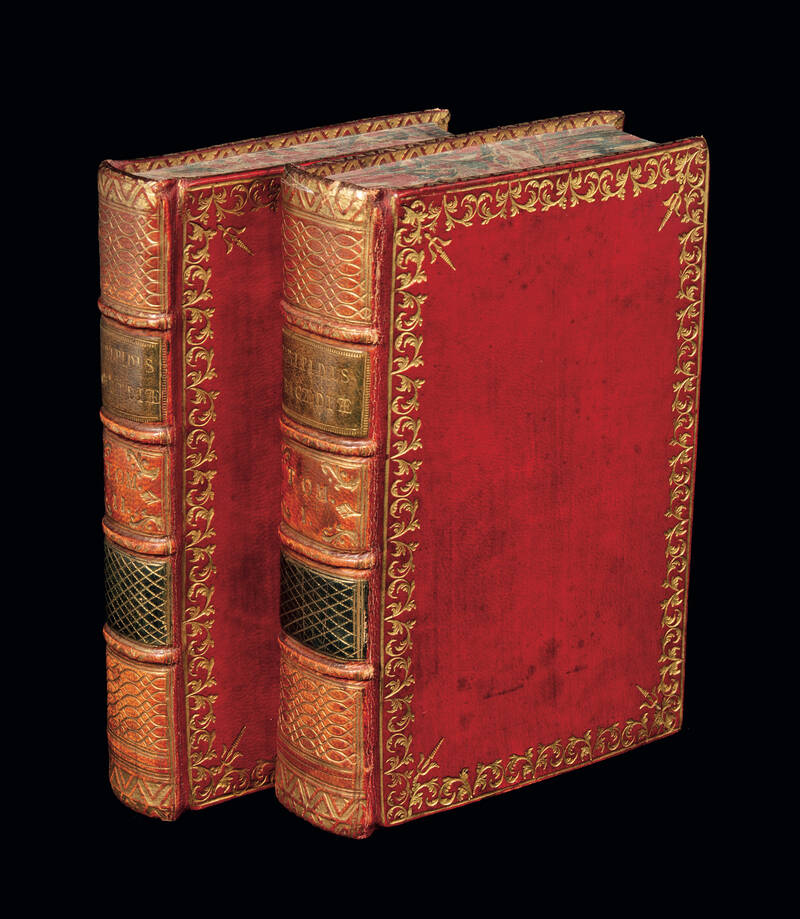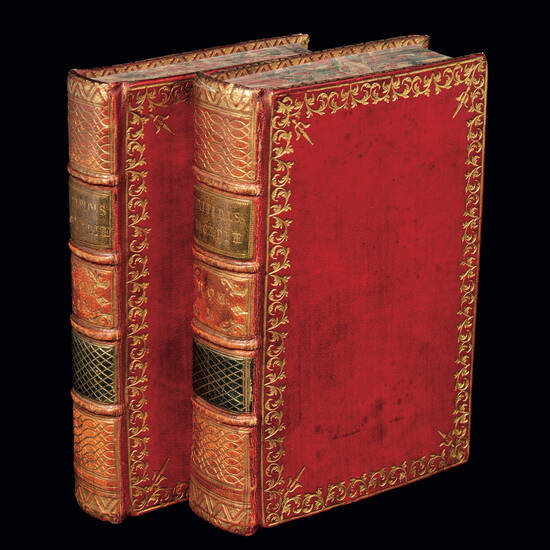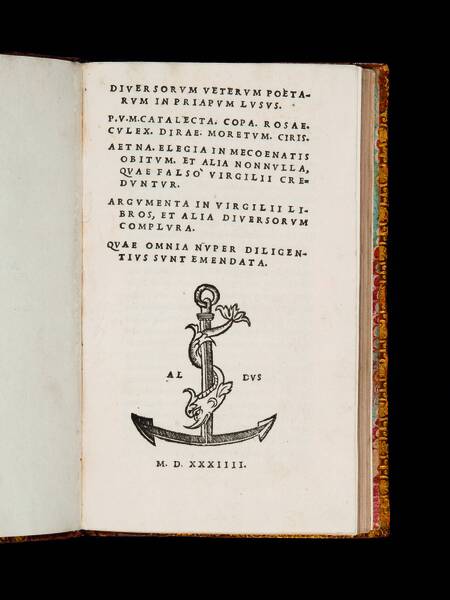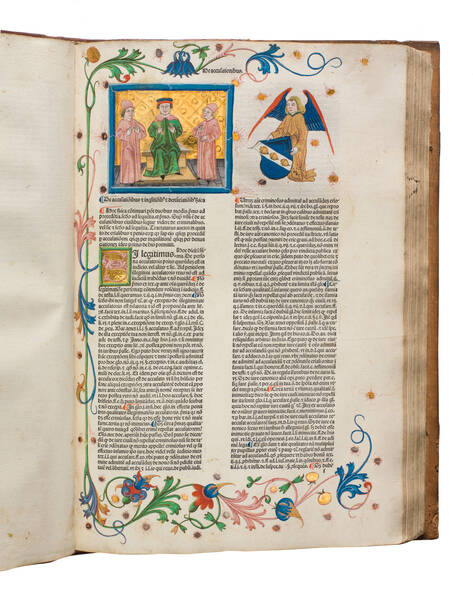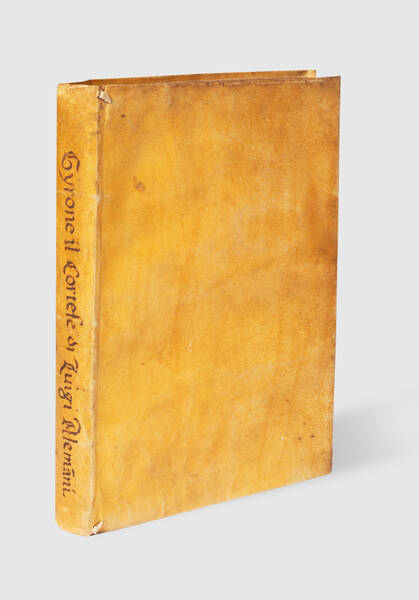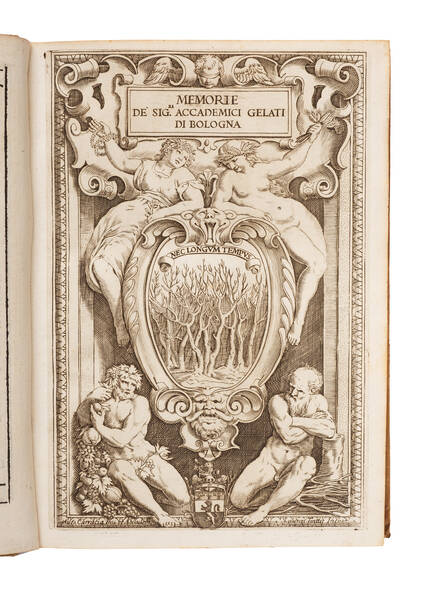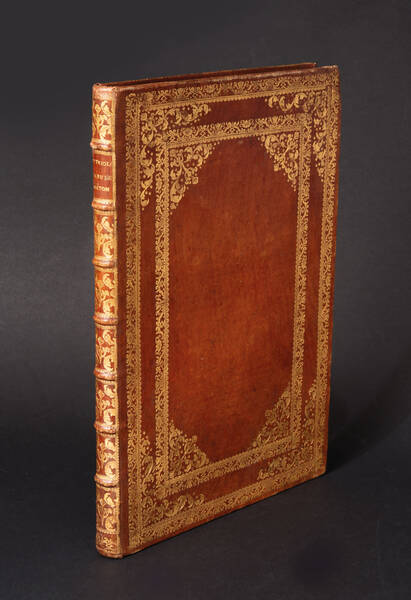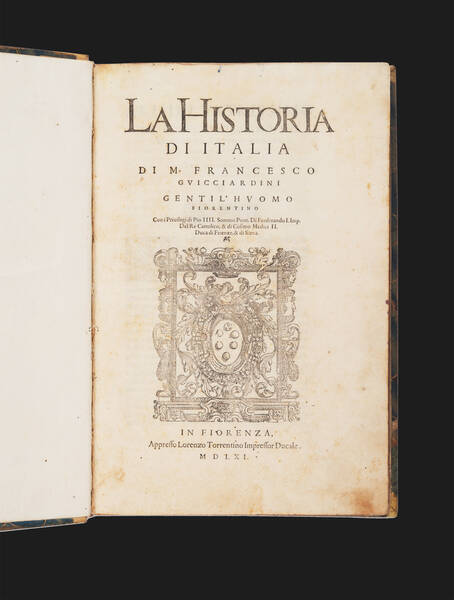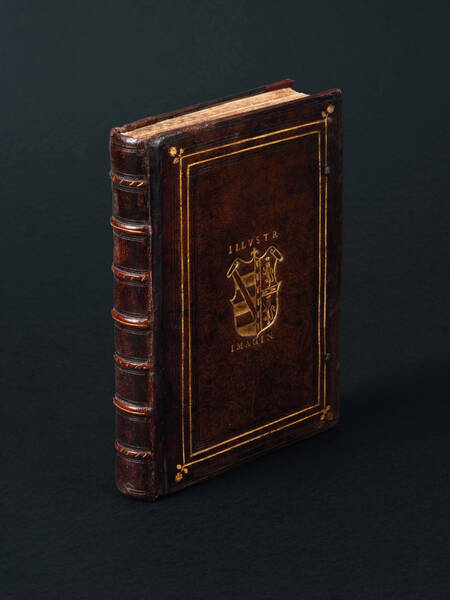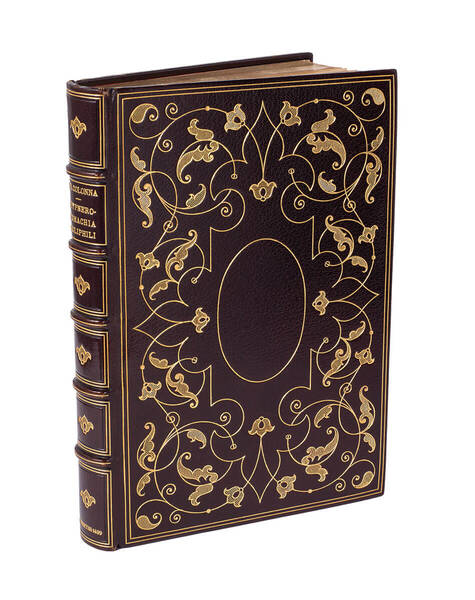EURIPIDES. Tragoediae septendecim ...
Venice, Aldus Manutius., February 1503.2 volumes, octavo (156 x 100mm), [268]; [190] leaves, Aldine dolphin device at end, Latin and Greek marginalia with notes in several contemporary hands, leaves numbered at head (both occasionally cropped). Fine late XVIII century red morocco gilt, covers bordered with a gilt rule and repeated scrolled acanthus leaves, gilt fleurons to corners, spines with four raised bands richly gilt in compartments, green and blue morocco labels, inner dentelles gilt, marbled endpapers, all edges marbled. Provenance: Earls of Macclesfield (armorial bookplates, Shirburn Castle blindstamp.). A very fine set.
Editio princeps of the most part of Euripides tragedies. Medea, Hippolitus, Alcestis and Andromache had been previously published at Florence ca. 1495 by Lorenzo de Alopa; Electra was not published until 1545. At the end of the second volume we find the Hercules Furens not mentioned in the title page, menwhile included in the collection are the Resus whose autorship is doubtful and the Cyclops which is a satire and not a tragedy. In his preface to Demetrius Chalcondylas, Aldus indicates the edition consisted of one thousand copies and announces the imminent publication of the scholia to seven of the plays, but these were not printed until Giunta's edition of 1534. The Greek type used by Aldus here is the same introduced for the first time six months earlier for the Sophocles. It is the smallest Greek type so far and better cut than the previous ones; it is probably the best Greek type used by Aldus. Aldus' edition remained the most important printed text of Euripides until the 18th century. The contemporary marginal notes give alternative readings, references to other authors, and translations of complex phrases. The text of the first volume is preceded by a sheet of manuscript with notes in Latin, Italian and Greek with relevant page numbers, in the same hand as did the numbering. The two 16th-century annotators were accomplished classicists. The first – c.1550s – glossed numerous passages with Latin translations, and had access to alternative versions of the text, as he corrected a few lines using variants. Since he generally mentioned his authorities, when he did not it may mean he had access to unpublished mss. He cross-referenced Horace, Plato, Cicero, Theocritus, Aristophanes and Sophocles. On the title of vol. 1 he noted the Pythian oracle's statement to Socrates, ‘Sophocles is wise, Euripides is wiser, but of all men Socrates is wisest', found in Aristophanes. Interesting annotations pertain to the harsh rhetorical ‘agon' in which Hermione accuses Andromache of being a witch and coming from a barbarian people prone to incest and polygamy. The annotator glossed Hermione with ‘Asian women are poisonous', ‘barbarians practice the works of Venus indiscriminately', ‘women's libido is greater than men's' and ‘there is no remedy against evil women'. A slightly later hand annotated passages in ink or pencil with references to Estienne's commentary on Euripides and Sophocles, published in 1568.
Renouard 43/10; Dibdin I 524
Other Books
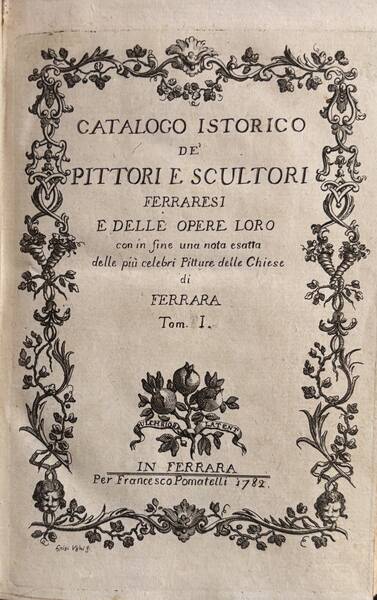
CITTADELLA, Cesare
Catalogo istorico de' pittori e scultori ferraresi e delle opere loro con in fine nota esatta delle più celebri pitture delle chiese di Ferrara.
€ 2.200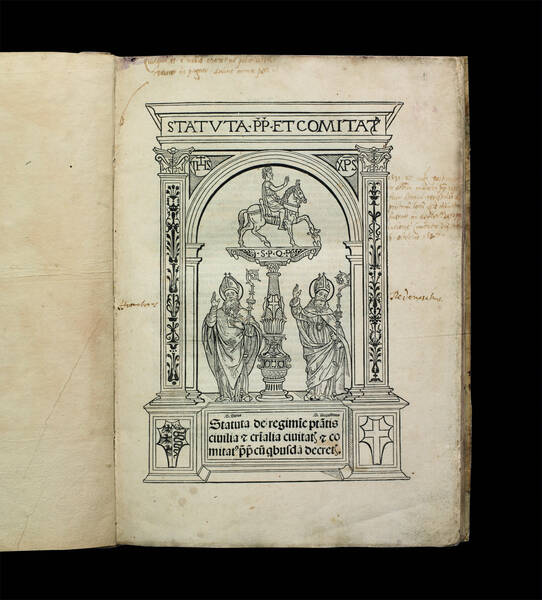
[PAVIA, Statuti]
Statuta Papiae et comitatus. Statuta de regimine potestatis ciuilia & criminalia ciuitatis & comitatus Papiae cum quibusdam decretis.
€ 14.000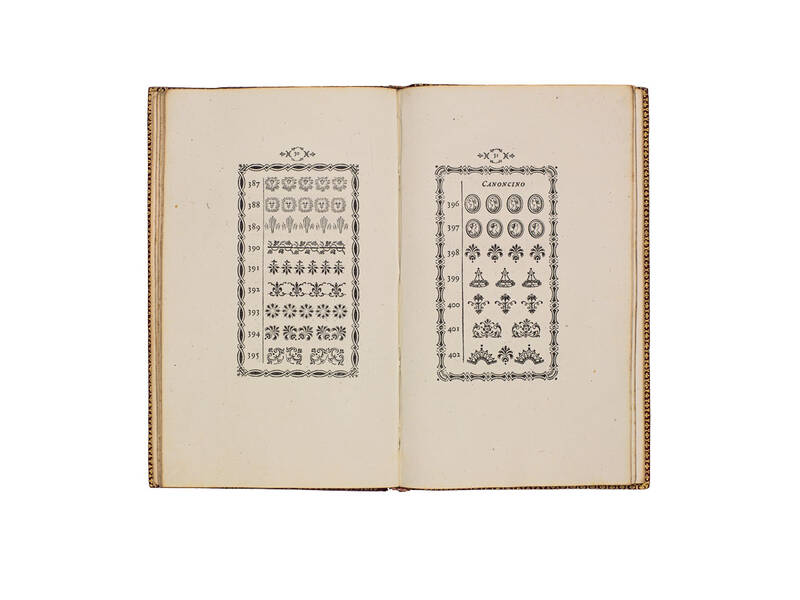
[BODONI]
Fregi e Majuscole incise e fuse da Giambattista Bodoni direttore della Stamperia Reale
SOLD OUT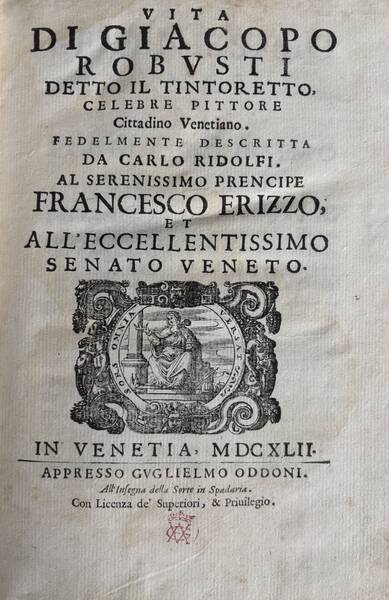
RIDOLFI, Carlo
Vita di Giacopo Robusti detto il Tintoretto, celebre pittore, cittadino venetiano.
€ 2.500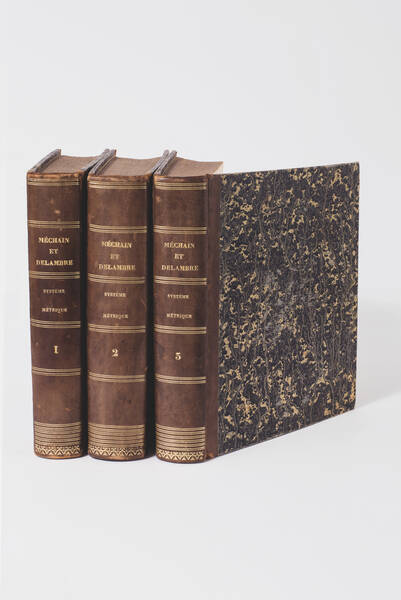
DELAMBRE, Jean-Baptiste-Joseph & MÉCHAIN, Pierre-François-André
Base du système métrique décimal, ou mesure de l'arc du méridien compris entre les parallèles de Dunkerque et Barcelone, exécutée en 1792 et années...
SOLD OUT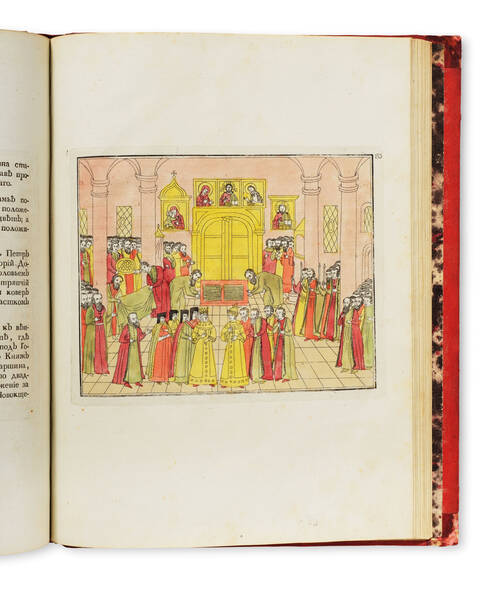
BEKETOV, Platon
Opisanie v litsakh torzhestva, proiskhodivshego v 1626 godu fevralia 5, pri brakosochetanii gosudaria tsaria i velikogo kniazia Mikhaila...
€ 18.000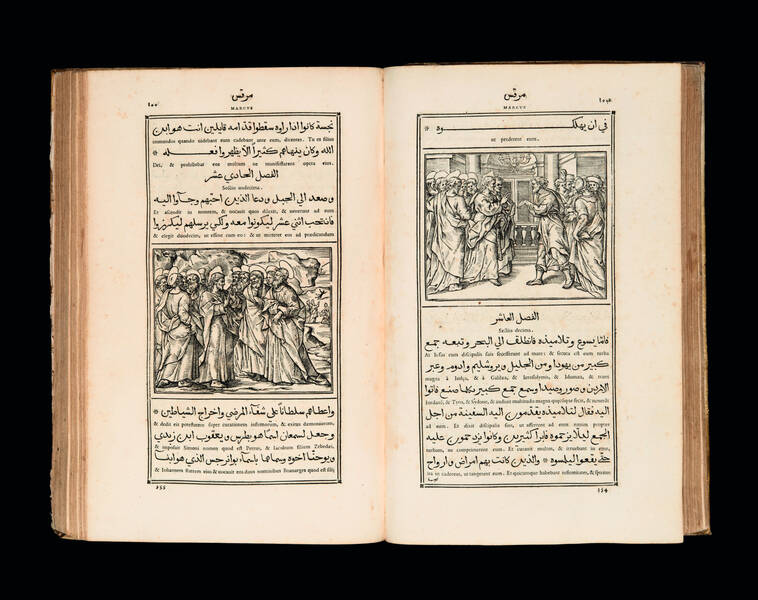
[BIBLIA ARABICA]
Evangelium Sanctum Domini nostri Iesu Christi conscriptum a quatuor Evangelistis sanctis, id est Matthaeo, Marco, Luca et Iohanne.
€ 15.000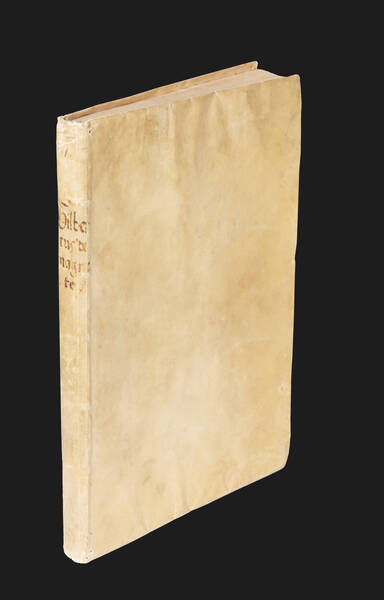
GILBERT, William
De magnete, magneticisque corporibus, et de magno magnete tellure; Physiologia nova, plurimis & argumentis, & experimentis demonstrata.
SOLD OUT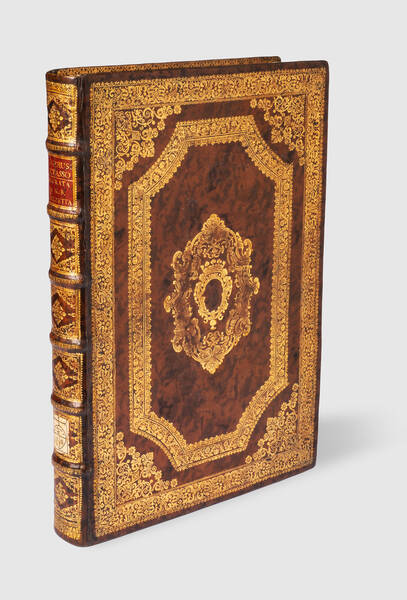
TASSO, Torquato
La Gerusalemme liberata di Torquato Tasso con le figure di Giambatista Piazzetta, alla Sacra Real Maestà di Maria Teresa d’Austria, regina...
€ 18.000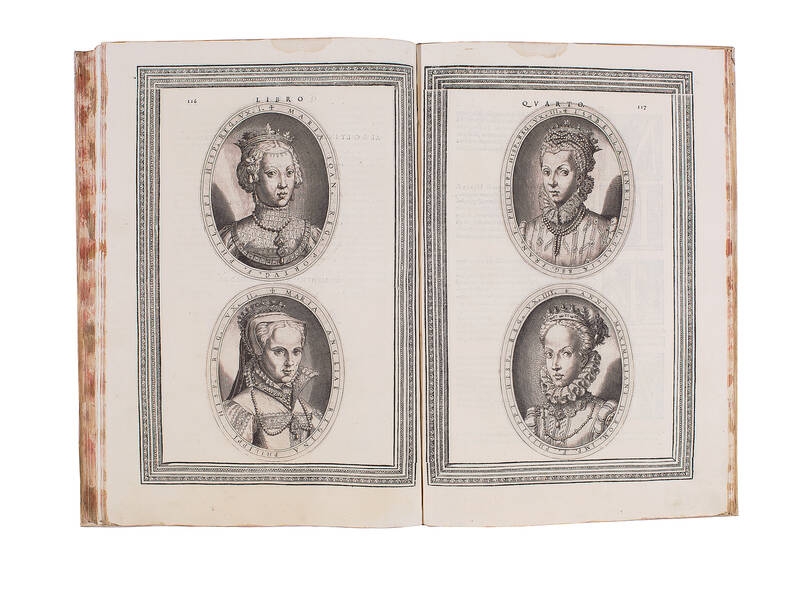
CAMPO, Antonio
Cremona fedelissima città et nobilissima colonia de romani rappresentata in disegno col suo contado et illustrata d'vna breue historia delle cose piu...
€ 15.000MEDA RIQUIER rare books ltd.
4 Bury Street St James's
SW1Y 6AB London
Phone +44 (0) 7770457377
info@medariquier.com
